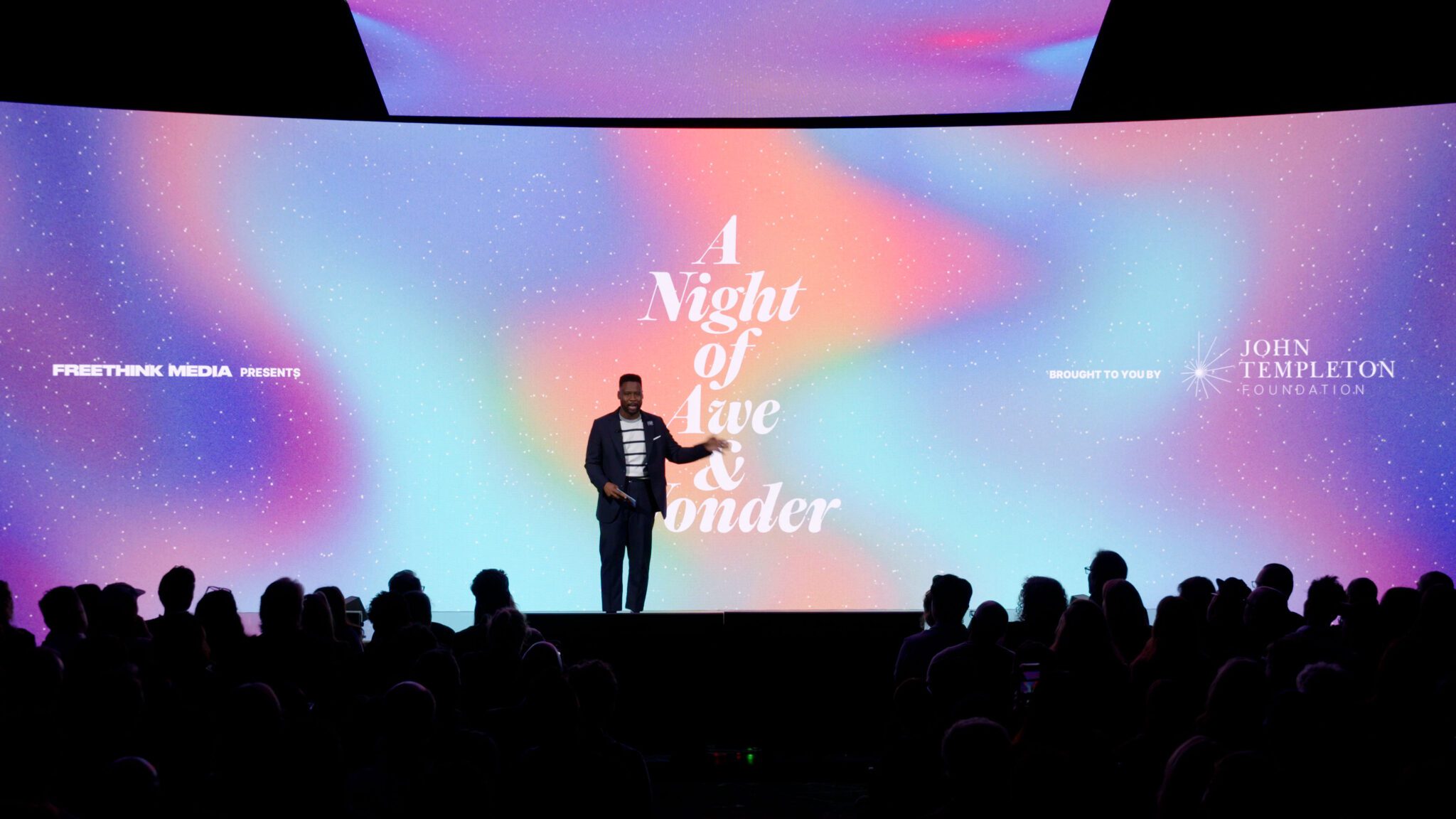In September, the John Templeton Foundation and Freethink Media gathered eight remarkable storytellers—scientists, artists, explorers, and authors—in a room of peers, luminaries, and fellow curious minds for an inspiring live event in Los Angeles: A Night of Awe & Wonder.
The event was emceed by Kmele Foster, podcaster and host of the John Templeton Foundation-funded program “Dispatches From The Well,” who kept the evening moving with a mix of intellectual rigor, pace, and thoughtful humanity. The program flowed from star fields and whale song to explorations of Earth’s deepest trenches, highest orbits, and micro-wonders, followed by human-scale insights: birth, life, and the great unknown of death, showing how awe and wonder reshape how we think, feel, and connect.
It was the grand salon reimagined: ideas shared without the cynicism often amplified by media, music, and art; faces lit up with recognition, curiosity, and laughter.
Amid an era of AI avatars, deepfakes, and loneliness—real human discourse flourished.
Setting the stage
Los Angeles, a city built on imagination. The town where Ray Bradbury dreamed up The Martian Chronicles and Octavia E. Butler remade the future in nearby Pasadena; where the Griffith Observatory and Mount Wilson taught generations to look up; where Laurel Canyon’s folk harmonies, the Hollywood Bowl’s symphonies, and Compton’s beats share the air; where the Mojave shimmers in a heat-haze, the horizon unfurling like a mirage; where redwoods vault skyward to the north and, to the west, the Pacific waves beat time against a sunset surf.
The event’s stage did some of the storytelling itself. Color-saturated, painterly light bathed the room in ambers, deep blues, and violet. It cast a cinematic mood that felt equal parts observatory and studio, as if we’d been transported to another planet or perhaps more deeply into our own. Screens glowed with starry glimmers and waveforms. The crowd mingled, sipping cocktails, as servers slipped through with small bites. Deep thought doesn’t preclude gastronomic delight.
Your guides
On stage, modern field guides to awe and wonder shared stories that stretched from the cosmic to the deeply personal. Among them:
- Awe researcher and UC-Berkeley psychologist Dacher Keltner, founding director of the Greater Good Science Center and author of Awe: The New Science of Everyday Wonder and How It Can Transform Your Life
- Astrophysicist and black-hole theorist Janna Levin of Columbia University
- Explorer and adventurer Victor Vescovo of the Five Deeps Expedition
- Marine biologist and National Geographic Explorer David Gruber, founder of Project CETI at CUNY
- Filmmaker David S. Goyer (The Dark Knight; Foundation)
- Author and PBS host Kelly Corrigan (Tell Me More)
- Actor-author Rainn Wilson (The Office; Soul Boom: Why We Need a Spiritual Revolution)
- Composer Robot Koch, whose live score invited mind-travel and reflection
The stories spanned galaxies, oceans, and inner lives—each a reminder that awe is both a scientific field and a human inheritance.
Eight doors to awe
Dacher Keltner opened with a definition: “Awe is an emotion that you feel… when we encounter vast mysteries that we don’t understand.” His lab, he explained, has gathered stories of awe from 26 countries and identified eight reliable sources of awe: moral beauty, nature, collective effervescence, art, music, spirituality, big ideas (epiphanies), and life and death.
The effects are practical: awe makes us less lonely, more altruistic, humble, curious about others, and it “decreases ideological polarization.” He added, “A minute or two of awe” is even good for the body. He left the stage with a challenge: “We need more awe…“How do we build communities of awe? How do we get this emotion into the stories you work on…the schools…the museums…the public spaces…our public life?”
The universe in a drop
Janna Levin zoomed out. “Everything anyone has ever seen or ever will see makes up less than five percent of what is out there,” she said. “The dark energy is in this room right now…the dark matter is coursing through you right now.” That realization can unsettle or steady; for her, it’s the latter. “We simply factually have to accept that we are not everything and we’re not even much… with that… comes a shift.” She offered Rumi as a lifeline: “You are not a drop in the ocean. You are the entire ocean in a drop.”
The deep, the peak, and the void
Victor Vescovo took us to three thresholds: the Pacific Ocean’s Mariana Trench, Everest’s death zone, and low-Earth orbit. The bottom of the ocean, he said, was “very, very quiet…like a blanket,” and “the darkest dark you can imagine.” Above 26,000 feet, “if you stop…you are simply dying more slowly,” and the climb becomes “a thing of will.” Space, he said, was “like going to a Metallica concert…with the volume at 11,” followed by the overview effect. “You don’t see borders, and you feel this connection that this is our home.” His reflection landed softly: “I did it so you don’t have to. There are smaller windows… sunset, a kind interaction, watching a dog eat a pumpkin.”
Listening across species
David Gruber’s Project CETI is attempting something wonderfully audacious: interspecies listening at scale: decoding sperm-whale communication through long-horizon fieldwork and modern machine learning. He described evidence of “a sperm whale phonetic alphabet. Yes. An alphabet… based on musical components, rhythm, tempo…and ornamentation.”
If we can learn to “listen” across species, he suggested, it could be a Copernican shift for human humility and seed a new kind of environmental ethic grounded in relationship, not abstraction. His closing note, “As far as I’m concerned, everything’s possible until it’s not.”
Panthers and dragons: awe at the edge of the ordinary
“I’m a filmmaker, I’m a storyteller,” said David Goyer, tracing how awe (and mystical experiences) shaped his craft: the “edge of the ordinary” childhood, inexplicable encounters (including a panther pacing him at dusk), and years of discomfort to earn the metaphors. Awe, he argued, “invites us to listen, to observe, to honor the stories that surround us” and to become “more open and more compassionate.” His invitation: “seek out mysteries, look for signs… look for connections in the most unlikely places.”
Moral beauty on a linoleum Floor
Rainn Wilson reframed awe by treating “sacred” and “beauty” as actions and practices, not ornaments. “The most sacred place that I can conceive of is a drab hallway…in the back of a crappy hospital,” where his wife and son almost died and then lived. “Sacred can mean linoleum and aluminum chairs and chipped paint and the smell of Lysol at four in the morning.” Beauty, he argued, isn’t glamour but a social power, especially moral beauty, that “can call you to action,” and “perhaps beauty is really all we need to transform ourselves and our planet.”
Attention as an act of love
Kelly Corrigan closed with a dispatch from the Serengeti and a Philadelphia kitchen. Awe taught her to attune—to termites’ architecture, to a mother’s breath as she kept vigil during her passing, to the humble grapefruit spoon that outlasts jewels. In a world that scatters attention, she argued for shrinking the self and noticing what’s specific, so our loved ones don’t dissolve into generalities. Her closing words: “Be small. Look closer.”
Awe & wonder: the mission
David Nassar of the John Templeton Foundation framed the evening around Templeton’s mission. He echoed Heather Dill Templeton, interviewed on the Templeton Ideas Podcast about her 10-year tenure as President and CEO of the John Templeton Foundation. Dill, the granddaughter of Sir John Templeton, shepherded in a new era that included launching the multimedia platform Templeton Ideas and updating the Foundation’s mission and purpose statements.
“We describe our work as investing in interdisciplinary research and catalyzing conversations that inspire awe and wonder. That’s what we do,” said Dill. “Why does it matter? We are trying to create a world where people are curious about the wonders of the universe, free to pursue lives of purpose and meaning, and motivated by great and selfless love.”
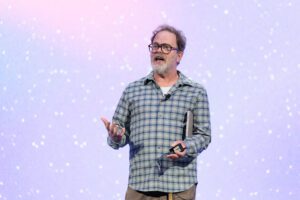
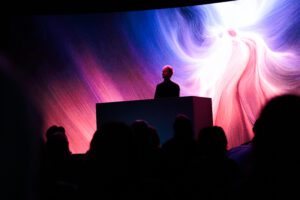
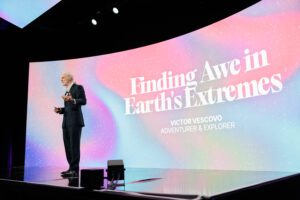
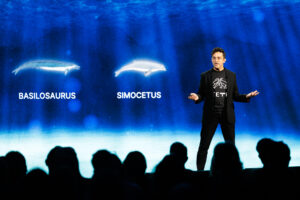
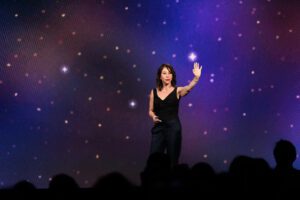




Alene Dawson is a Southern California-based writer known for her intelligent and popular features, cover stories, interviews, and award-winning publications. She’s a regular contributor to the LA Times.
